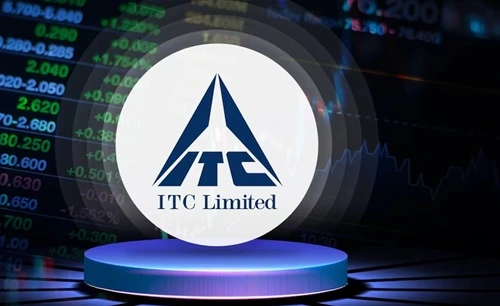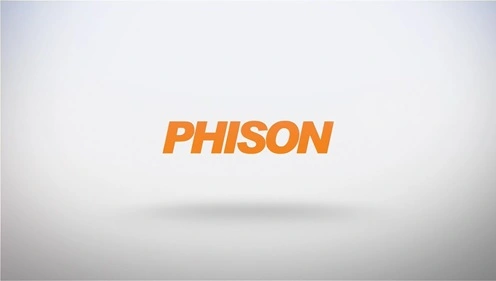ITC Limited, one of India’s largest conglomerates, is a prominent player in industries ranging from fast-moving consumer goods (FMCG) and hospitality to agribusiness, packaging, and information technology. Initially known for its cigarette business, ITC has diversified over the years to reduce dependency on tobacco and grow its presence in non-cigarette FMCG segments. With a portfolio that includes brands like Aashirvaad, Sunfeast, Bingo!, and Classmate, ITC has positioned itself as a multi-business entity with a stronghold in several key markets. However, as the company adapts to a rapidly changing business environment, it faces both significant challenges and promising growth opportunities. A SWOT analysis provides insight into ITC’s strengths, weaknesses, opportunities, and threats in the current market landscape and its future outlook.

Strengths
1. Diversified Business Portfolio: ITC has a robust and diversified business model that spans multiple industries. Its primary revenue streams include cigarettes, FMCG, agribusiness, paperboards, hotels, and IT services. This diversification provides ITC with revenue stability and risk mitigation, as downturns in one sector can often be offset by gains in another. ITC’s vast business portfolio also enables it to tap into various growth sectors in India’s economy, which reduces its dependency on any single segment, particularly tobacco.
2. Strong FMCG Brand Presence: Over the years, ITC has built a formidable portfolio of FMCG brands, with products across food, personal care, and stationery categories. Brands like Aashirvaad (staples), Sunfeast (biscuits), and Fiama (personal care) have become household names. The company’s established brands, combined with new product launches, have helped ITC secure a significant share in the non-cigarette FMCG sector, an area where it continues to invest heavily to achieve growth.
3. Leadership in the Cigarette Market: Despite its diversification, ITC remains a leader in India’s cigarette industry, with a dominant market share. Its strong distribution network and popular cigarette brands like Gold Flake and Classic give ITC a competitive advantage. The high profitability of its cigarette business has allowed ITC to fund expansions and investments into other segments, making tobacco a significant cash cow for the company.
4. Strong Distribution Network: ITC’s extensive distribution network reaches deep into urban and rural India, providing it with a competitive advantage in markets where infrastructure can be challenging. This network has enabled ITC to distribute its FMCG products widely, helping it penetrate rural markets where consumer spending is on the rise. ITC’s network, built initially for its cigarette business, has been effectively leveraged for the distribution of non-cigarette FMCG products, giving the company a comprehensive reach.
5. Commitment to Sustainability and Rural Engagement: ITC is known for its focus on sustainability and social responsibility, as reflected in initiatives like the e-Choupal model, which provides rural farmers with information on crop prices, weather updates, and best practices. The company’s focus on rural development and environmental sustainability has not only helped it build goodwill but also strengthened its agribusiness operations, creating a sustainable supply chain for its products.
Weaknesses
1. High Dependence on Tobacco for Profits: Despite diversification efforts, ITC’s financials are heavily reliant on its tobacco business, which accounts for a significant portion of its profits. This dependency poses a risk, as India’s regulatory environment for tobacco is becoming increasingly restrictive due to public health concerns. While ITC’s non-cigarette FMCG segment is growing, it has yet to achieve the profitability levels necessary to offset the potential risks associated with tobacco.
2. Lagging in the FMCG Market: Although ITC has made significant strides in non-cigarette FMCG, it still lags behind established FMCG giants like Hindustan Unilever (HUL) and Nestlé in certain categories. ITC’s market share in food and personal care is substantial but has not yet reached the dominant position it holds in the tobacco segment. Brand competition and lower margins in the FMCG segment continue to impact ITC’s growth and profitability in this area.
3. Limited Global Presence: While ITC is a leader in the Indian market, its global presence remains limited compared to its competitors. Unlike other Indian conglomerates such as Tata and Reliance, ITC has not aggressively pursued international expansion, which restricts its revenue potential and makes it more vulnerable to local market fluctuations. This limited international exposure means ITC lacks access to growth opportunities in emerging markets outside India.
4. High Fixed Costs in the Hotel Business: ITC’s hotel segment, though reputed for luxury, faces challenges due to high fixed costs. The hotel industry is highly capital-intensive and subject to economic and seasonal fluctuations, which can impact ITC’s profitability. The COVID-19 pandemic further exacerbated the challenges in this segment, and the slow recovery of the tourism sector has put pressure on ITC’s hospitality business.
Opportunities
1. Expanding Non-Cigarette FMCG Segment: The FMCG sector in India is expected to grow rapidly, driven by increasing urbanization, higher disposable incomes, and changing consumer preferences. ITC is well-positioned to capitalize on this growth by further expanding its non-cigarette FMCG portfolio. With continued investment in categories like food, beverages, and personal care, ITC can enhance its market share and reduce its dependency on tobacco.
2. Growth in Rural Markets: Rural India is emerging as a key growth driver for consumer goods, and ITC’s existing rural distribution network gives it an edge in reaching these untapped markets. With rising rural incomes and the increasing adoption of FMCG products in rural areas, ITC can expand its rural footprint and cater to growing demand by launching products tailored to rural consumers’ needs and price sensitivities.
3. Opportunities in Sustainable Products and Packaging: ITC has a strong focus on sustainability, which aligns with the increasing consumer preference for eco-friendly products. The company’s expertise in paper and packaging can be leveraged to offer sustainable packaging solutions, both for its own products and for other companies. Additionally, developing eco-friendly and organic product lines in the FMCG segment can help ITC capture the growing market of environmentally conscious consumers.
4. Expansion in Digital and E-commerce Channels: The COVID-19 pandemic has accelerated digital adoption and online shopping in India, a trend that is likely to continue. ITC can capitalize on this shift by strengthening its e-commerce presence and direct-to-consumer channels, which can increase accessibility for urban and rural consumers alike. Enhanced digital engagement can help ITC expand its reach, reduce distribution costs, and collect valuable consumer data to refine its product offerings.
5. Potential Acquisitions and Strategic Partnerships: To accelerate growth in non-cigarette FMCG and other segments, ITC can explore acquisitions and strategic partnerships, particularly in high-growth areas like organic foods, health and wellness, and digital retail. Strategic acquisitions would allow ITC to diversify its product offerings quickly and gain access to established distribution networks and customer bases.
Threats
1. Stringent Regulatory Environment for Tobacco: India’s regulatory stance on tobacco is becoming increasingly strict, with higher taxes, labeling regulations, and advertising restrictions. Given ITC’s reliance on tobacco for profitability, any further restrictions or tax increases on tobacco products could negatively impact its revenue and profitability. Such regulatory pressures may also lead to shifts in consumer behavior, with more people moving away from tobacco products.
2. Intense Competition in FMCG: The FMCG sector in India is highly competitive, with established players like HUL, Nestlé, and Procter & Gamble, along with emerging startups, vying for market share. To remain competitive, ITC must constantly innovate and differentiate its offerings, which requires continuous investment in product development and marketing. Intense competition could limit ITC’s ability to expand its market share and impact its profitability.
3. Economic Slowdowns and Inflationary Pressures: Economic slowdowns, inflation, and rising raw material costs could impact ITC’s profit margins, particularly in the FMCG and agribusiness segments, where price sensitivity is high. Higher input costs for products like food staples and paper could force ITC to raise prices, which may deter cost-sensitive consumers. Additionally, the hotel and hospitality business is highly susceptible to economic downturns, affecting its overall profitability.
4. Environmental and Social Risks ITC is heavily invested in agribusiness, making it vulnerable to risks associated with climate change, such as unpredictable monsoons, droughts, and crop failures. Climate-related risks and environmental concerns could disrupt ITC’s raw material supply chains, especially for agricultural produce, leading to potential cost fluctuations and supply constraints.
Future Outlook
Looking forward, ITC has significant growth potential, particularly in the FMCG and rural markets. By focusing on product diversification, digital expansion, and sustainability, ITC can strengthen its non-cigarette FMCG business and reduce its reliance on tobacco. However, navigating regulatory challenges in the tobacco sector, intense competition in FMCG, and inflationary pressures will be crucial for sustainable growth.
In conclusion, ITC’s future success will depend on its ability to balance its growth in new sectors with the need to address regulatory and market challenges in its core tobacco business. Through strategic investments in innovation, rural engagement, and eco-friendly practices, ITC can continue to be a leading player in India’s business landscape, poised for growth across multiple segments in the evolving consumer market.

